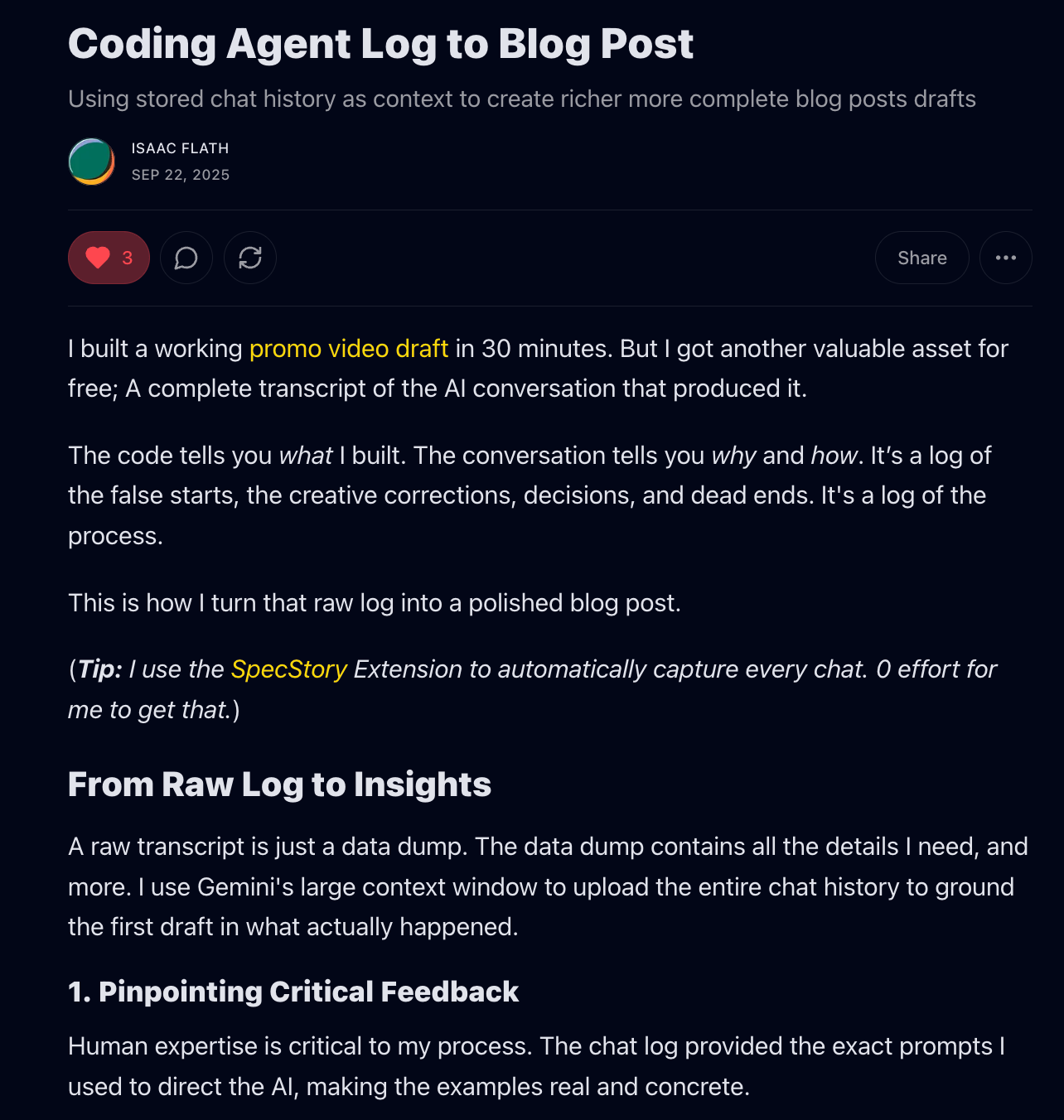SpecStory in Action: From AI Session to Blog Post
Capturing the Why Behind What We Build
Most people think AI coding is all about speed and treat their AI coding sessions as disposable. You generate the code you need, close the tab, and move on.
Isaac, one of the early SpecStory users, took a different path. After finishing a build session, he looked back at the SpecStory history and realized it wasn’t just a log of prompts and responses. It was a record of false starts, arguments with his AI pair programmer, and the reasoning behind each decision.
That history turned out to be more than a transcript. It became the outline of a blog post.
“The code shows what I built. The conversation shows why and how.” — Isaac Flath
What Isaac Did With His History
Isaac realized his SpecStory history was more than just a transcript. It captured the full flow of his coding session: the back-and-forth corrections, the points where the AI got things wrong, and the debates where he had to defend or rethink his design choices. He turned those conversation history into a blog post.
Here is how the history helped him:
Concrete examples: The conversation transcript preserved the exact prompts and corrections he used, giving his writing authenticity and clarity.
Capturing the process: The history included tool calls, failed attempts, and course corrections. These became vivid examples in his article, things he would have forgotten without a record.
A natural outline: The decisions and debates formed a structure he could build on directly.
Faster writing. With the history as source material, all he needed was to add his reflections and polish the language. The heavy lifting was already done.
You can read Isaac’s full breakdown here: Turning an AI Conversation into a Blog Post.
What Isaac’s Story Shows
Isaac’s experience highlights something every developer can use: AI sessions are not throwaway. With SpecStory, they can become valuable assets.
Histories preserve intent. They capture not just the output but the thinking that shaped it.
Details make stories stronger. Prompts and debates can be pulled directly into writing, tutorials, or documentation.
Logs become raw material. A single AI session can produce both working code and a draft article to share.
Conclusion
SpecStory preserves the reasoning behind your code. This is the real value of SpecStory. It does more than log your AI prompts. It captures the decisions, debates, and intent that normally vanish once the tab is closed. That record is what makes your work reusable, reviewable, and teachable.
Most coding tools help you move faster in the moment. SpecStory ensures that the knowledge behind your work is not lost to the moment. It transforms AI sessions from disposable interactions into durable context you and your team can rely on weeks or months later.
The result is more than efficiency. It is a stronger codebase, faster reviews, smoother onboarding, and a shared memory of why things were built the way they were.
In a world where AI keeps accelerating how we write code, SpecStory safeguards something enduring: the understanding and intent that make code maintainable. Speed matters, but context endures.
Learn more:
SpecStory Docs: https://docs.specstory.com/
GitHub: https://github.com/specstoryai/getspecstory


